The Trianon Palaces at Versailles- Visiting the Grand Trianon and Petit Trianon
Purchases made through links earn us a small commission, at no extra cost to you.
The Trianon Palaces is Part Two of a three part series about Versailles. In Part One, we toured the Palace of Versailles and in Part Three we will visit the Queen’s Hamlet.
On my first trip to the Palace of Versailles 15 years ago, I didn’t get a chance to explore the property as much as I wanted to. I think this is true for a lot of people. They visit the palace, walk down to the Fountain of Latona, maybe going as far as the Fountain of Apollo, and then head out to their next destination. I get it- there’s only so much time on vacation. But by rushing off, people are missing out on some of the best parts of Versailles.
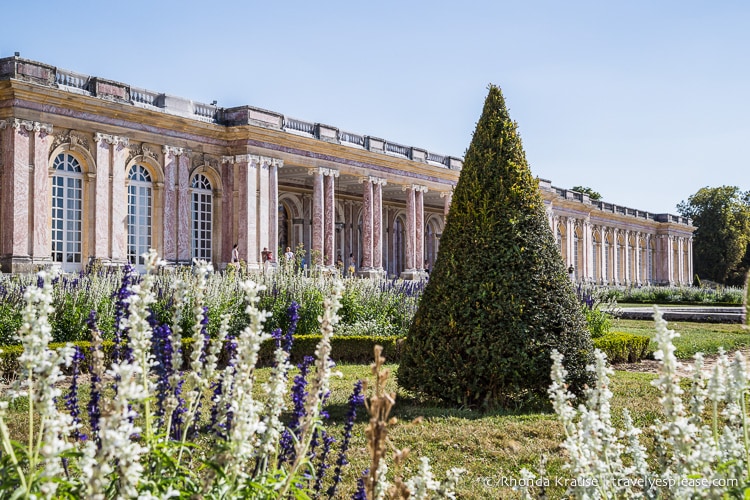
Truth is, Versailles is so much more than just the main palace. It’s a vast estate of quiet paths, colourful gardens, and impressive fountains, with temples and sculptures neatly tucked away behind the greenery. There’s even an entire hamlet of country cottages, built especially for Marie-Antoinette, and a pair of smaller palaces known as the Trianons.
The Trianon Palaces
After touring the Palace of Versailles it was refreshing, even a relief, to escape the crowds and stifling formality of the palace. Even the royals were looking to break free from time to time! So in 1668, King Louis XIV bought a village named Trianon, had it destroyed and then annexed the land to the Versailles Estate. Eventually the Trianon palaces were built, becoming the perfect place for the king and queen to flee the strict etiquette of royal life.
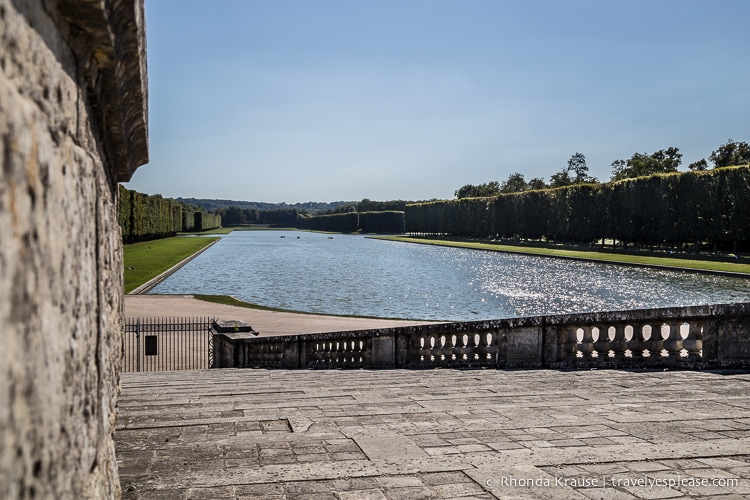
These two new palaces- the Grand Trianon and Petit Trianon- were designed to be peaceful abodes with intimate spaces. Even though they were more informal than the main chateau, the Trianon Palaces were still very much fit for royalty with sumptuous apartments, elegant courtyards and terraces, and beautiful gardens.
The Grand Trianon
The Grand Trianon is a small residence in comparison to the main palace at Versailles, but elegant none the less. It was erected in 1687 by architect Jules Mansart who described it as, “A little pink marble and porphyry palace with delightful gardens.”
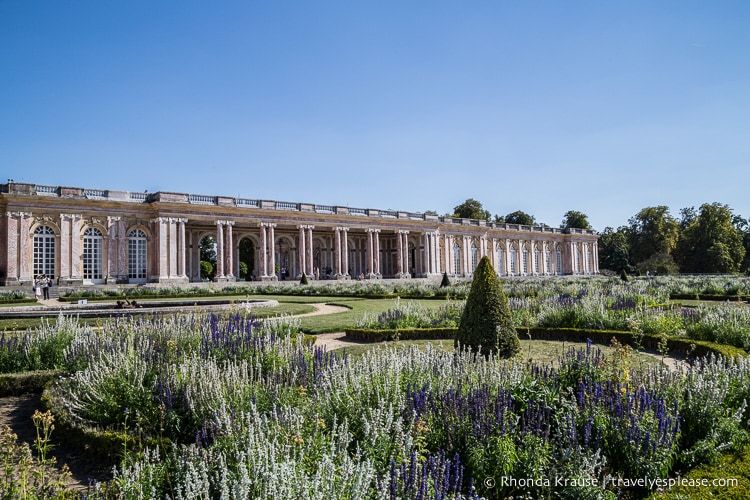
The Grand Trianon was built with only a ground floor and features a marble colonnade opening onto a central courtyard. All of the rooms have high arched windows offering views of either the garden on one side or the main quadrangle on the other.
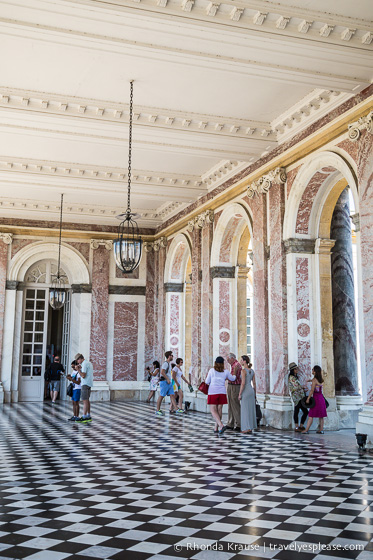
The Grand Trianon was used mainly for hosting family visitors, but the king and his maîtresse-en-titre (“official mistress”) would sometimes stay here. The palace was continuously inhabited (apart from the Revolution) welcoming everyone from Peter the Great of Russia to Stanislas Leszczynski, former king of Poland. However, The Grand Trianon’s most notable resident was Napoleon and most of the furnishings you see today were commissioned by him.
In 1963, President Charles de Gaulle ordered renovations of the Grand Trianon so that it could be used as a guesthouse for French Presidents and foreign officials. The northern wing of the palace is still used today for presidential functions.
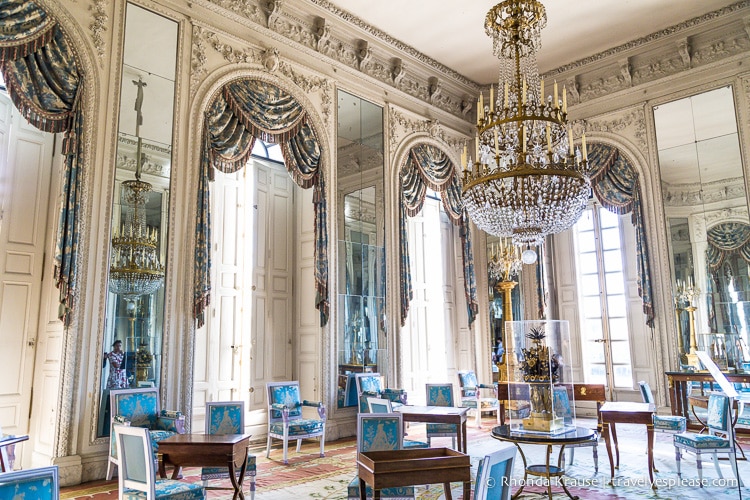
As we walked through the palace I really enjoyed the less formal feel of the Grand Trianon. The bold, bright decor and large windows gave the palace an airy, relaxed, somewhat playful feel to it, even though it still was quite fancy.
Two of my favourite rooms in the Grand Trianon were Louis-Philippe’s family room and the Empress’ bedroom.
The family room is very sunny thanks to a yellow wall decorated with blue motifs and matching yellow upholstered furniture. There are also tall mirrors, games tables, and a sparkling chandelier.
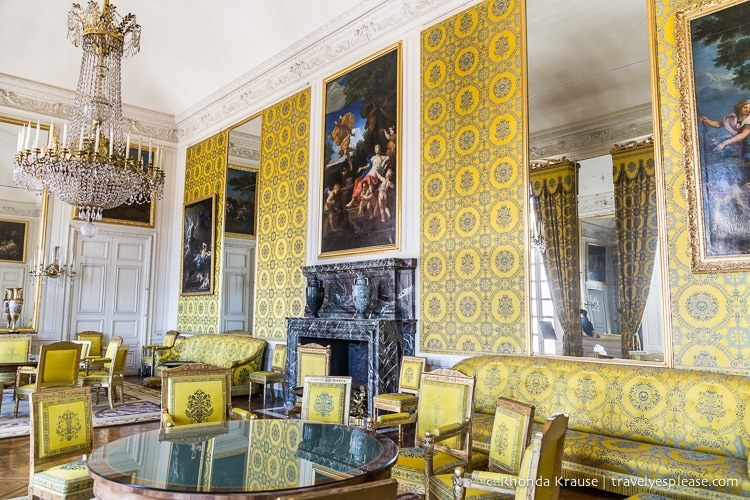
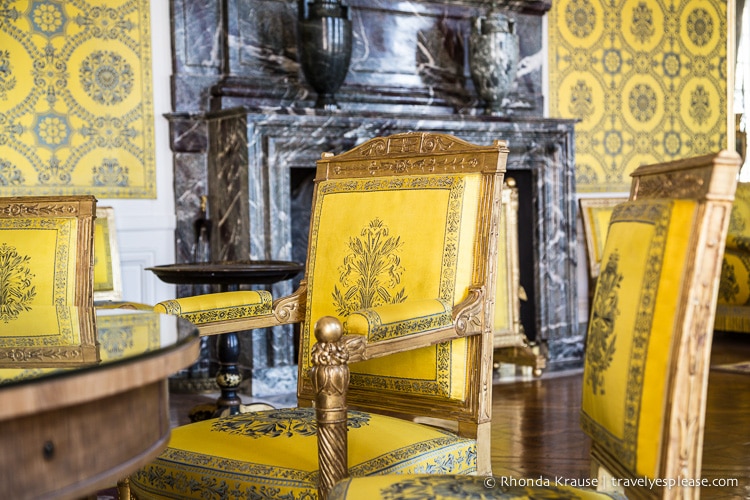
The Empress’ bedroom is vibrant as well with a pink accent wall and pink furniture. The centrepiece is of course the bed, which used to be in Napoleon’s bedroom at the Tuileries Palace.

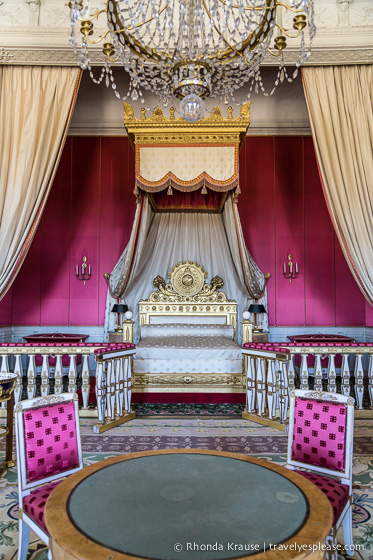
The Petit Trianon
The Petit Trianon was built from 1763 to 1768, under the reign of Louis XV, and is considered to be the masterpiece of royal architect Ange Jacques Gabriel. The palace is of the neoclassical aesthetic and features a terrace with four Corinthian columns.
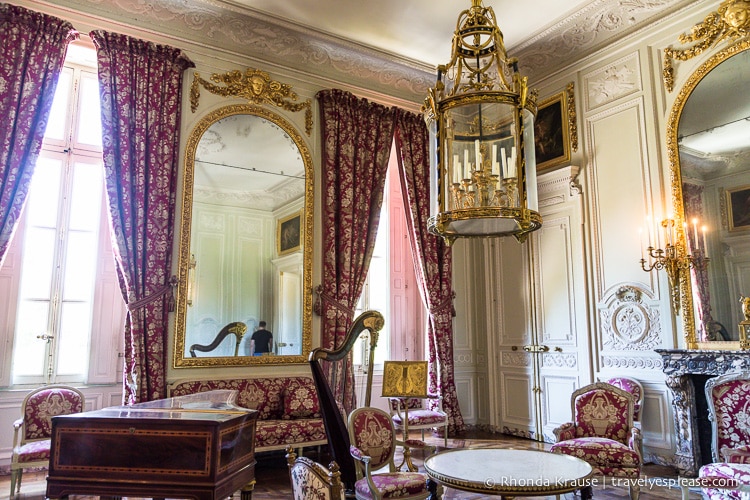
Louis XV commissioned the Petit Trianon so that he could be near his beloved botanical gardens and enjoy some privacy with his mistress. After his death and the ascension of Louis XVI to the throne, the Petit Trianon was gifted to Marie Antoinette by the new king. She soon transformed the gardens to reflect the English style of small brooks and picturesque lawns.

The Petit Trianon is very small and doesn’t take long to visit. By the time we got here we were tired of looking at palaces, so we just did a quick tour of the inside then hurried to the gardens to enjoy the sunny day.
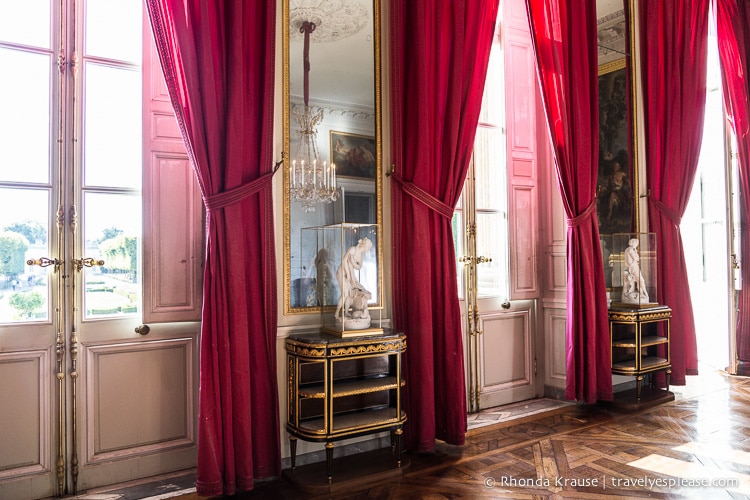
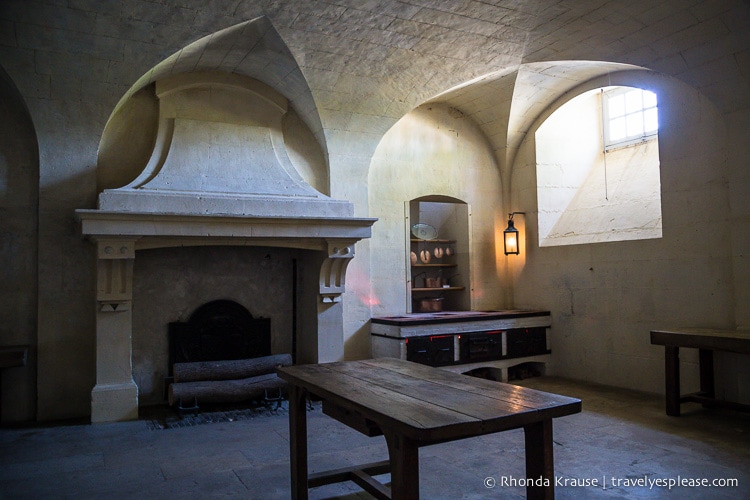
Exploring the Petit Trianon Gardens
Marie Antoinette much preferred the natural landscapes of English gardens over the restrictive symmetry and flowerbeds of French gardens. While my preferences are for French gardens, I still really enjoyed taking a relaxing walk through the English garden at the Petit Trianon.
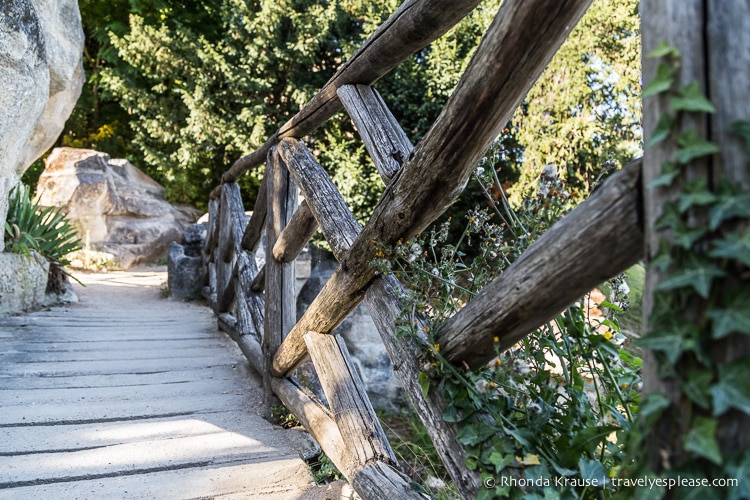
The garden was designed by neoclassical architect Richard Mique and features a pond, stream, grassy hills, an artificial rock mound complete with waterfall, rare species of trees, and a few ornamental structures.
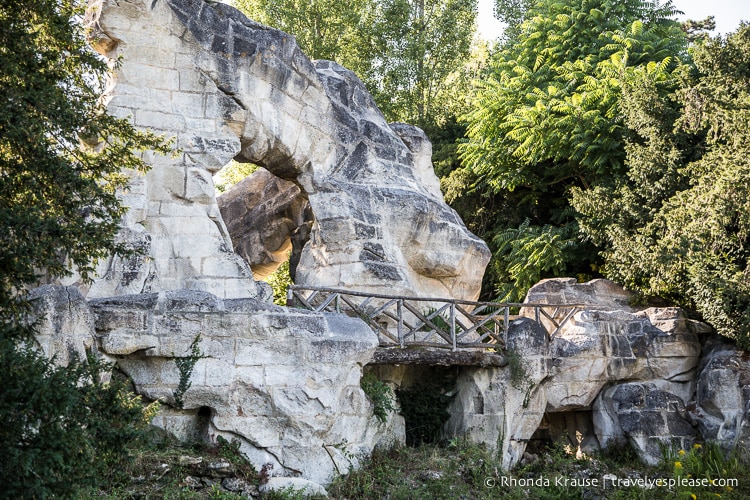
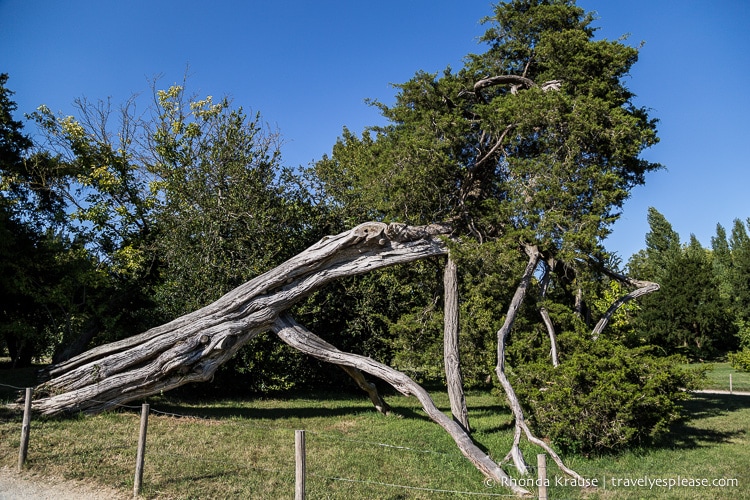
The two structures in the Petit Trianon gardens are the Temple of Love (also known as the Love Monument) and the Belvedere.
The Temple of Love was built on an islet in the stream, perfectly positioned to be seen from the queen’s bedroom. This Greek-style, circular temple consists of 12 Corinthian columns and a low-profile cupola shading a copy of Bouchardon’s statue Cupid Fashioning his Bow from Hercules’ Club.
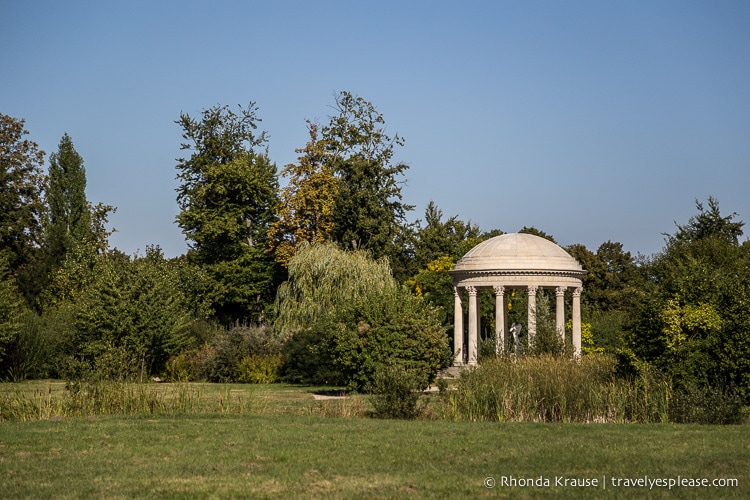
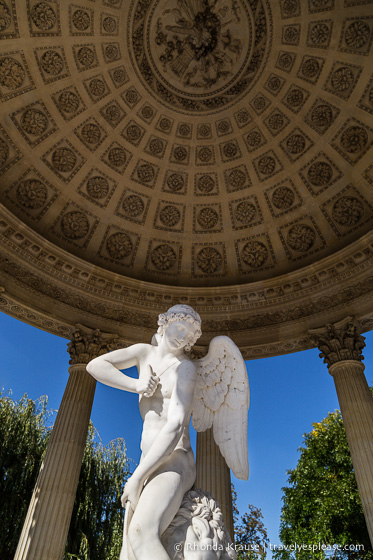
The Belvedere is a small octagonal pavilion overlooking the pond. The exterior is decorated by bas-reliefs symbolizing the four seasons whereas the interior is adorned with murals and a marble mosaic. Marie Antoinette used the Belvedere as a lounge in the summer and today it’s still a popular place for visitors to sit and enjoy the beauty of the garden.
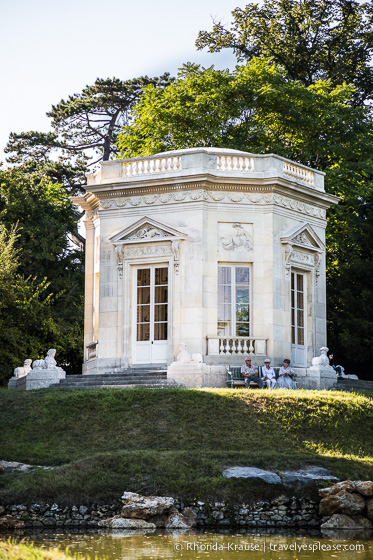
Final Thoughts About Our Visit to the Trianon Palaces
Visiting the Trianon Palaces at Versailles was an enjoyable way to spend some time after touring the main chateau. I enjoyed the seeing the contrasts in design and function between the large, formal palace and the smaller Trianons. While the Trianon palaces aren’t as visually stunning, we definitely preferred their relatively laid-back atmosphere over the excited crowds at the chateau.
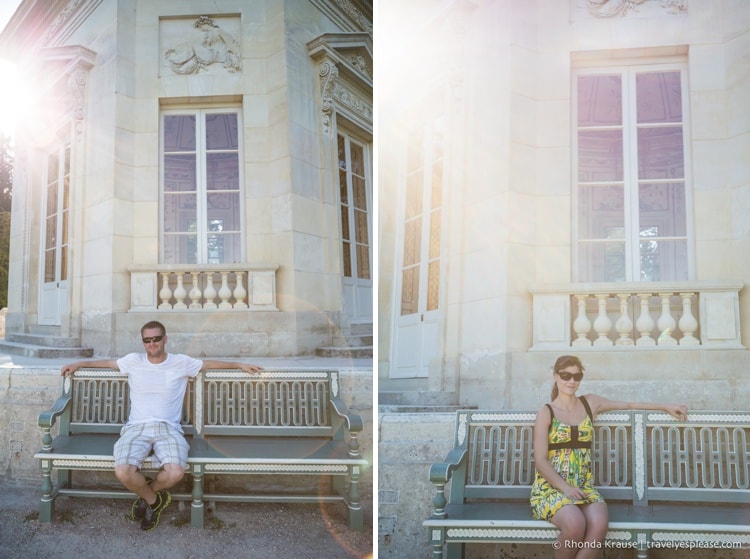
We thought the Grand Trianon was the more interesting of the two Trianon palaces, so if you’re short on time that’s the one we’d recommend visiting. What we remember most about the Petit Trianon is the gardens, so of course we’d recommend taking a walk around them as well.
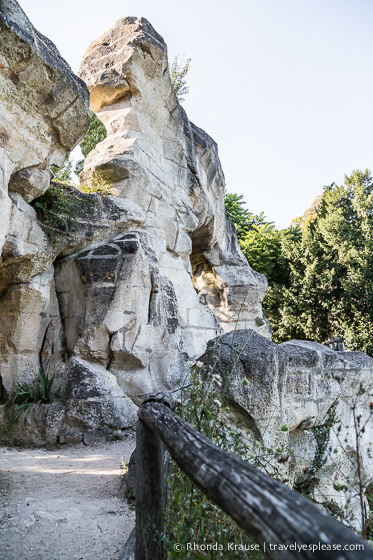
Continue on to Part Three of our post about Versailles, The Queen’s Hamlet.
Tips for Visiting the Trianon Palaces
Admission: The Passport ticket gives you admission to the Palace of Versailles, the Trianon palaces and the Queen’s Hamlet.
- If you don’t want to visit the main palace, a separate ticket can be bought for the Trianons and the Queen’s Hamlet. You can buy this at the entrance to any of the Trianon palaces.
Buying Tickets: Here is a trusted site where you can buy digital tickets and have them immediately delivered to your smartphone:
- Palace of Versailles- Passport (access to all areas, including the Trianon palaces and Queen’s Hamlet)
Hours of Operation: The Trianons are open every day except Mondays.
- In high season (April 1- October 31) hours are 12:00 pm- 6:30 pm. The ticket office closes at 5:50 pm and last entrance is at 6:00 pm.
- In low season (November 1- March 31) hours are 12:00 pm- 5:30 pm. The ticket office closes at 4:50 pm and last entrance is at 5:00 pm.
Access: You can enter the Trianon Estate either by going first through the main palace via the Grille d’Honneur gate, or directly via the Queen’s gate or the Saint Antoine gate.
Transportation: For a fee there is a shuttle “train” that will take you to the Trianons. You can board it beside the main palace, at the North Parterre. Make sure you ask when the last shuttle will be picking people up from the Trianons, so you don’t have to walk all the way back to the palace at the end of the day. Trust us, it’s a long walk and your feet will hate you!
Information was updated in January 2022, but can change without notice. Please confirm directly with the venue.
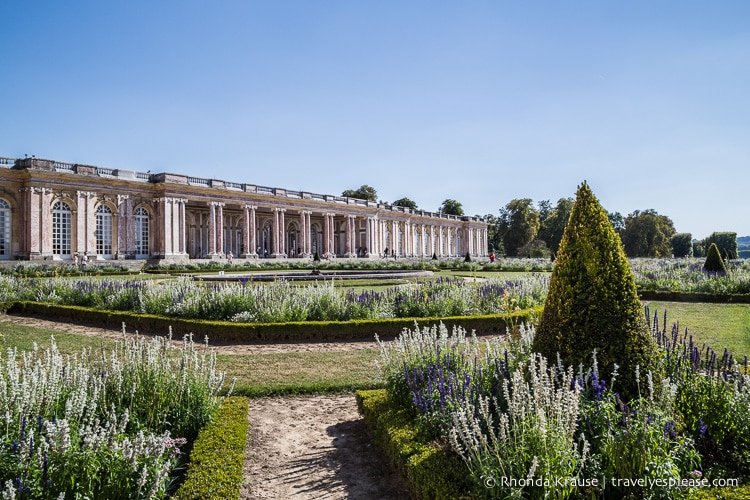
Accommodations in Versailles
For your convenience, here is a list of hotels in Versailles. Please consider booking your Versailles accommodations through the included link. It costs nothing extra and helps support this website. Thank you!
More France Destinations and Travel Guides
- The Orangerie at the Palace of Versailles
- How to Spend 4 Days in Paris- Our Itinerary
- What to Expect on Your First Trip to Paris- A First Time Visitor’s Guide
- One Day in Strasbourg- Charm, Romance and an Incredibly Tall Cathedral
